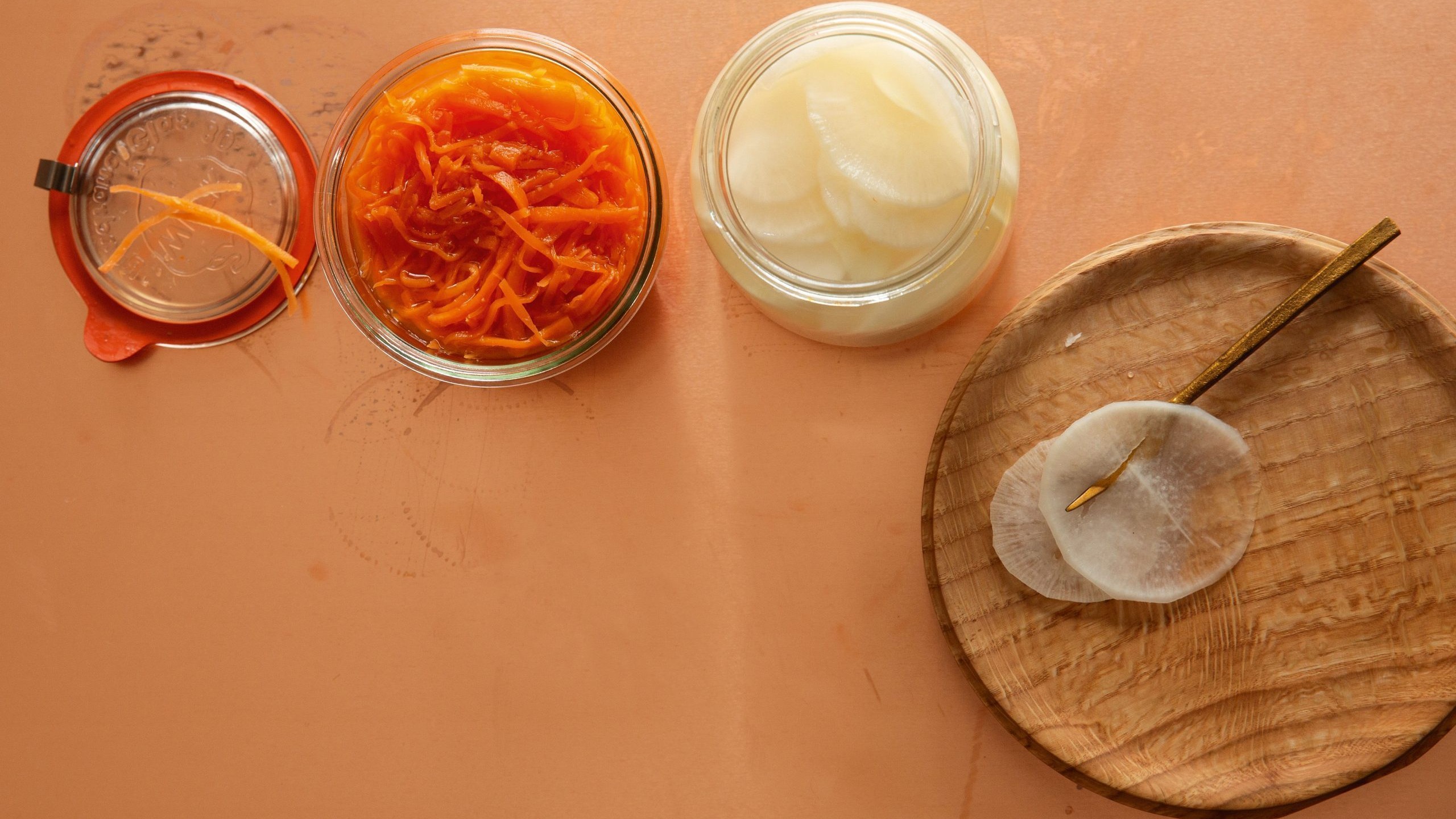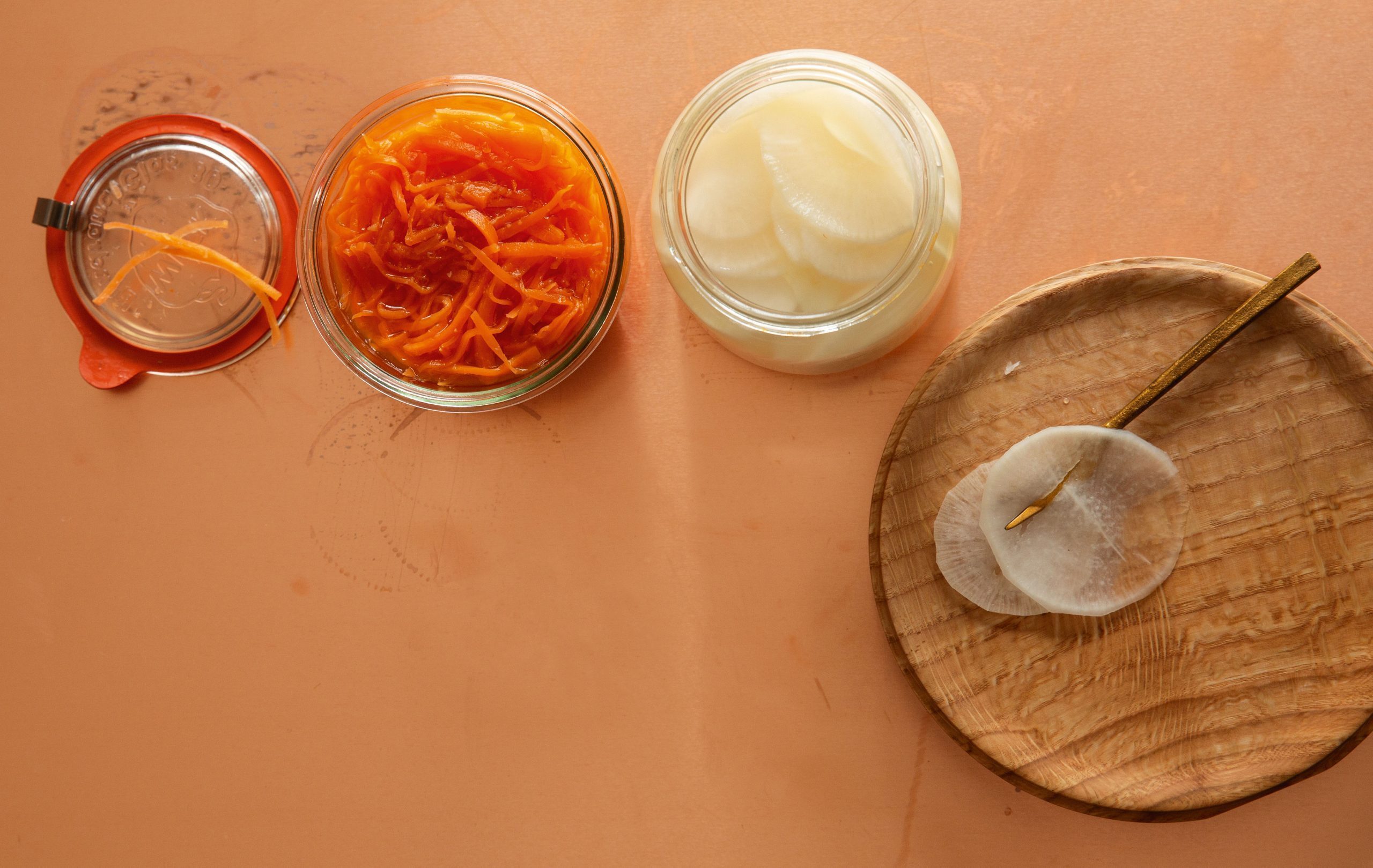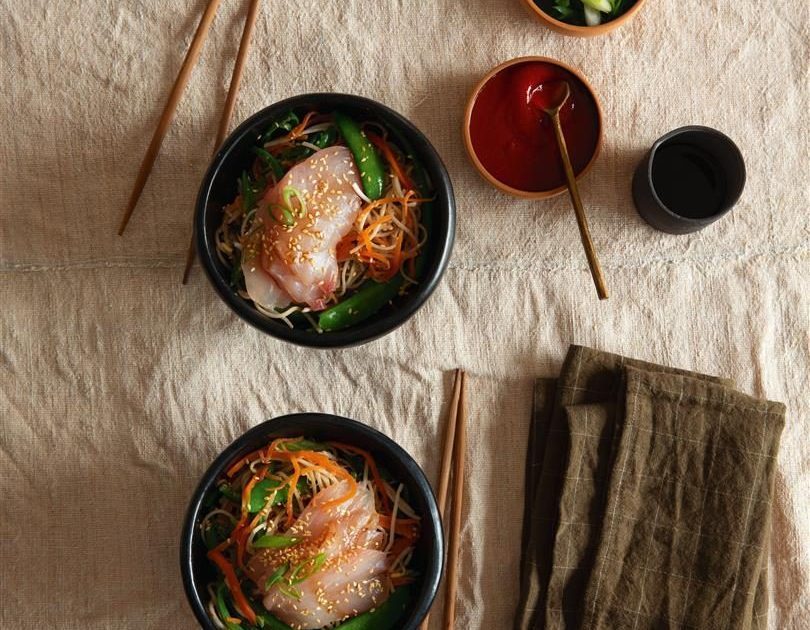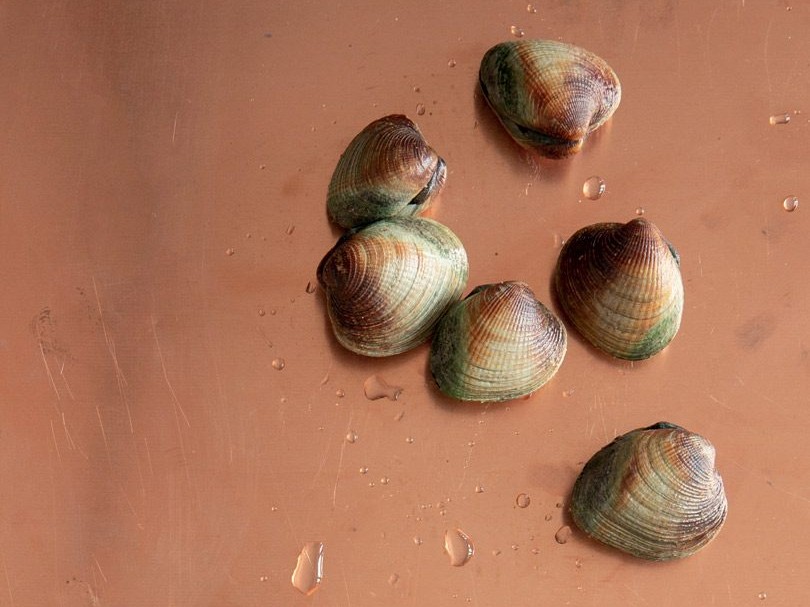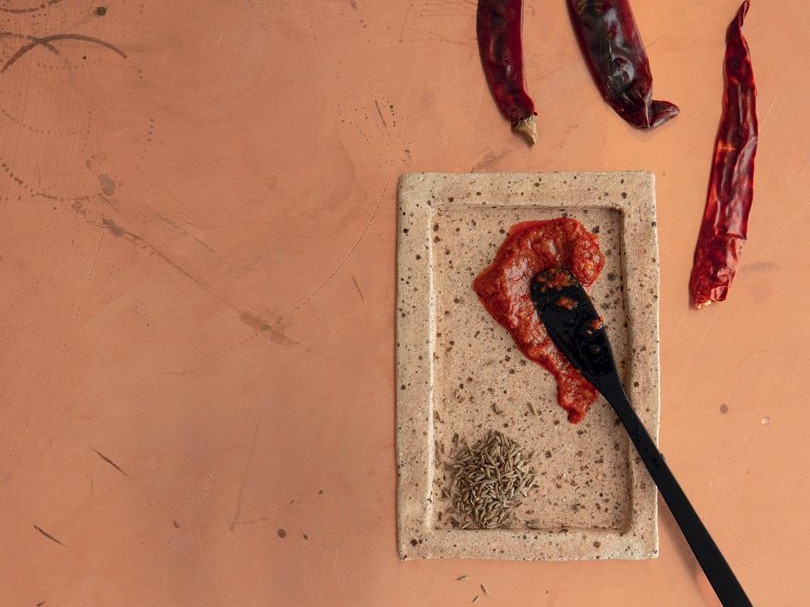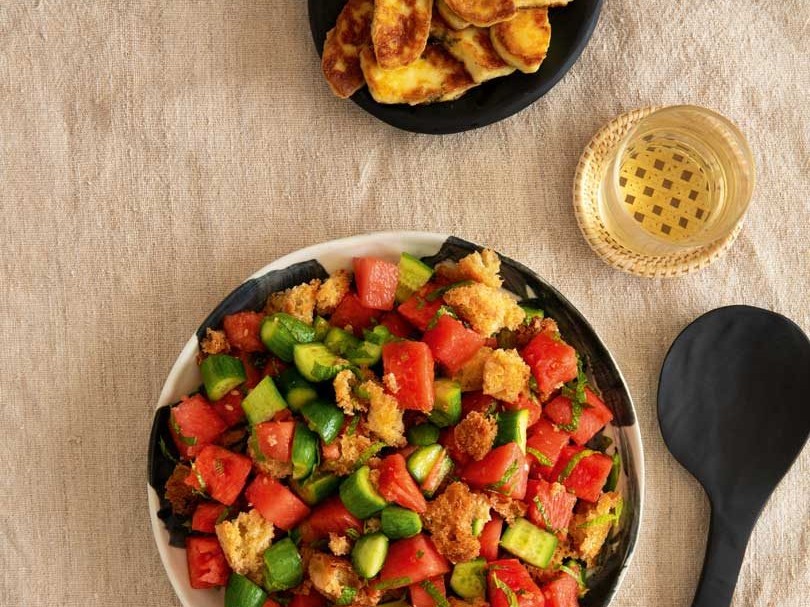Carrots along with cabbage, are one of the easiest vegetables to use when you start making lacto- fermented pickles. There are a few basics to be aware of but it’s mostly common sense. Of course you’ll need some clean, sterilised jars to put them in (I use either Agee or Weck-style jars with a wide lip). I use sea salt for fermentation as iodised salt inhibits the process and can darken your ferments, so is best avoided. Ideally use filtered water as chlorine also inhibits fermentation (or use cold pre-boiled water). You can vary the flavourings, adding herbs, chillies and the like. If you want to look at fermentation in more depth, I highly recommend Wild Fermentation by Sandor Katz.
2 & 1⁄2 teaspoons sea salt (not iodised), plus 2 tablespoons
1kg carrots, scrubbed and tips trimmed
3cm piece ginger, finely grated
2 cloves garlic, minced
Make a brine by mixing 500ml filtered water with 21⁄2 teaspoons sea salt. Set aside. Either grate or cut the carrots into a julienne (use a mandolin). Put the carrots in a large bowl and sprinkle with the remaining salt. Work the salt into the carrots with your hands for about 10 minutes; the carrots should soften and shrink in volume by around half, and have created some brine liquid. Add the ginger and garlic and mix thoroughly.
Pack the carrots tightly into 2x500ml jars. Ensure there are no air pockets and that you leave a gap of about 5cm at the top of the jar. Put a weight on top of the carrots (a small glass jar works well as does a ziplock bag filled with some of the extra brine). Top up the carrots with the brine leaving a gap 2.5cm from the top of the jar. Put on the lid and leave at room temperature (ideally between 17-22°C) but out of direct sunlight. Fermenting time depends on the temperature – hotter temperatures mean a faster ferment time, cold weather a slower one. Try to remember to let the lid off the jar every day to release carbon dioxide and top up with extra brine if required. Taste it after a week – it should be crunchy and tart. If it isn’t, leave it at room temperature for another day or so at which point you can keep it in the fridge and use as required. It will keep fermenting in the fridge slowly.
For the daikon pickle pictured here, use 1⁄2 a peeled daikon thinly sliced into rounds (I used a mandolin). I omitted the ginger from this pickle but followed the carrot pickle instructions.
Coleslaw
Add some of the fermented vegetables to your favourite slaw. I like a combination of cabbage, spring onions, celery, capsicum as well as parsley, but do use whatever is available. I prefer to use an olive- oil-based dressing rather than mayonnaise, and it’s a good way to use some of the pickle juice as the acidic component of the dressing.
Tuna, green bean and egg salad
Hard boil some eggs, peel and quarter, then combine into a nicoise-style salad of tinned tuna, blanched green beans, cherry tomatoes, thinly sliced red onion, fermented carrots and olives.

